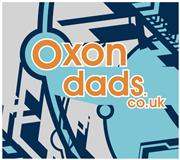Waking up naturally is one of life's greatest pleasures!

The wedding invitation had five names on it: my wife, me, plus our three kids, all cordially invited to head down to London to celebrate my cousin finding her soulmate. We were asked to RSVP to an email address, and so I opened up my laptop and began typing.
"Jess and I will definitely be coming to your wedding - can't wait! The kids won't, though - it's not often we get the opportunity to spend some time on our own, and it'll be nice to enjoy your special day without constantly checking to see if Noah's peeing in the bushes."
Nicely worded, I think you'll agree. The bottom line is, my wife and I (that phrase usually gets a cheer in wedding speeches, incidentally) wanted a weekend in London away from the kids.
i
And before you get all stroppy and judgmental, it was pretty much the first night we would spend away from our children in seven years. SEVEN YEARS. Most people go to jail for less time than that.
i
It turns out, though, that spending a child-free day or two comes with some unexpected consequences - aside from not being able to blame them for the smell when you fart in an elevator.
1. You don't know what to do with your hands.
It can be a real shock to the system when you suddenly don't have a thousand bags to carry, or hundreds of hands to hold at once; so much so, that you literally don't know what to do with your hands most of the time. Shoved in your pockets makes you look bored; arms crossed seems a bit aggressive, even for London. You end up swinging them wildly, like a Palace guard.
2. All you really want is a good night's sleep.
We had grand plans to relive our youth in London: hit the trendy bars, party until the early hours, drink ourselves stupid until we're sick. But by nine o'clock we were knackered, and by 10 o'clock we'd got a taxi back to the hotel and were fast asleep. When you tell your fellow wedding guests that you've got a hotel to yourselves they look at you with raised eyebrows and wink as if some Fifty Shades stuff is going to go down. No, no sir. We're genuinely just going to get a good night's sleep, and love it. Which brings me to my next point...
3. Waking up naturally is one of life's greatest pleasures.
i
After seven years of either being kicked awake and told to see to a crying child, or woken up by the sound of the aforementioned child vomiting all over the bedsheets, the experience of waking up slowly and naturally is more delicious than any Michelin-rated food could ever be.
i
Of course, you still wake up ridiculously early. But my word, it's nice to open your eyes and not see your child's huge face right in front of your nose.
4. You have nothing to talk about other than your kids.
Being childless for a weekend forces you and your spouse to actually talk to each other as opposed to exchanging short, sharp instructions in between tugging a sweatshirt over your child's head or negotiating a soiled nappy. The thing is, you talk about nothing other than your children, so much so that you wonder what on earth your conversations consisted of before you had them.
5. Your children aren't missing you as much as you think they are.
On Sunday night we returned to the Midlands and drove to the in-laws', who'd had the unenviable task of babysitting our children. In your imagination, you walk through the door and your children rush to meet you, arms outstretched, faces grinning. In reality, they look really disappointed, and don't want to go home. And, after five minutes of getting home, you're ready for another weekend away.
This article is taken from Parent Dish
We think this news story will be of interest to our visitors. However, please note it is from another source and does not necessarily represent the views of Oxondads. If you would like to comment on this article please click on the "No Comments" below or alternatively E-Mail info@oxondads.co.uk













